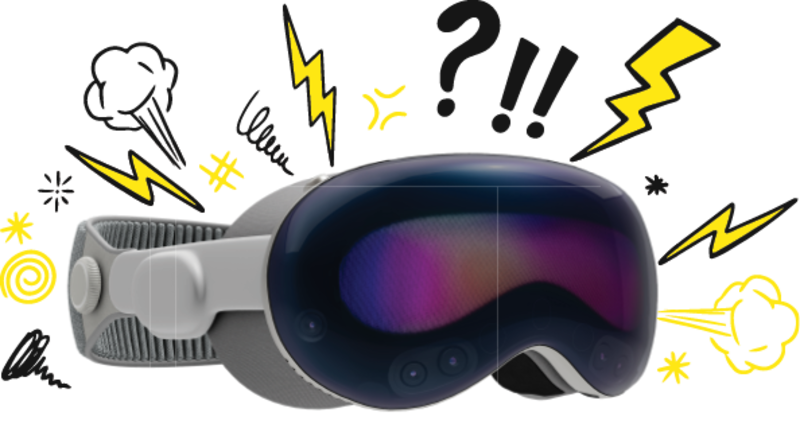By now, you surely know I’m a big baby, and as a 35-year-old man-child, I can say I’ve never been a fan of my fruits and vegetables. That includes a certain tech company. See, growing up, our house had a family computer, and as far back as I can remember – the early ‘90s – it was always some Macintosh made by Apple.
Among other families with computers, only a few were fellow Macintosh households. As time went on, my friends and I got into video gaming and discovered a near-endless variety of gaming consoles. Sega. Nintendo. PlayStation. Dreamcast. Panasonic 3DO. We tried to ensure we had the same consoles, but it was no good. This was, I begrudgingly admit, a good thing. This meant that if you had a PlayStation but wanted to play Mario, you had to go outside, touch grass, find another kid with a Nintendo, and … socialize. Gross.
Anyway, through the 2000s, gaming attention shifted away from the rich, biodiverse ecosystem of consoles to the oppressive homogenous realm of the personal computer. WarCraft, StarCraft, Diablo, Half-Life, Counter-Strike, Mech Warrior, Age of Empires, Command and Conquer – these games weren’t played on consoles; they were pillars of PC gaming! And computers don’t allow for multiple controllers – they didn’t even have controllers! Why do keyboards have so many buttons? Why can’t I hold it? Am I supposed to use a mouse? Do I need to bring my own computer?
Any fellow gamer reading this knows exactly where this is going.
I remember my first and only LAN (local area network) party, which is a gathering of gamers who hook up their computers together to play a multiplayer game. I had to get permission to take my mom’s Macintosh – and only after convincing her to buy me the same game everyone else was playing … and installing it without any hiccups.
Oh, there was a hiccup. The hiccup was that no games were available for Macintosh computers – at least not any games that my friends and I cared about. I was left in the dust.
Enough of My Villain Origin Story
As NYU Marketing Professor Scott Galloway brutally and beautifully stated: "VR headsets are cigarettes minus the charm."
Apple’s recent release of its Vision Pro headset has driven the internet into a tizzy. Between the mobs of naysayers and fans, it’s still a little premature to declare the large-scale adoption of augmented, virtual, or extended reality wearables a success – and we’re not even talking about the Vision Pro’s eye-popping $3,499 price tag.
Look, AR/VR/XR is like snow in Northern Virginia. It might happen, but it probably won't stick. AR/VR/XR is a product that has never been successful. Remember the Nintendo Virtual Boy? Yeah, exactly. Apple, should they choose to push this, is rolling the dice on a product genre with a failed history. And if Apple’s product is a business success, it will most likely not be due to the technology but rather their marketing muscle. When will Apple stop getting away with this?
I will say this about Apple: They're brilliant at letting other businesses create solutions – like touchscreens on Palm devices– to problems that don't exist while they (Apple) watch from the shadows and look for the most realistic solution. Once found, they present the problem to the public and announce the solution. Apple, like Thomas Edison, has essentially created a business model in which they take the ideas of others (like almost every iteration of the light bulb), take credit, and get away with it. The mouse and graphical user interface, for example, are often credited as Apple inventions but were created by Xerox at its Palo Alto Research Center. Talk about copiers!
Looking for Adoption in Alderaan Places?
Help us, Apple. You’re extended reality’s only hope! Well, outside of defense applications (which will not trickle down to civilian consumers for at least another decade). But how long before somebody unlocks a Vision Pro to use it while walking through pedestrian traffic and right into a lamppost in an attempt to dodge a pop-up ad?
Regardless of my thoughts on the product itself, this is exciting; it's been a minute since Apple has truly gambled on a technology – and the stakes are high enough that I imagine Steve Jobs would be proud. After all, the failure of the Vision Pro, along with the recent patent dispute over a sensor that measures blood oxygen levels in the Apple Watch, could be a landmark for the decline of Apple.
Also, I must say that from a manufacturing and craftsmanship quality perspective, Apple is second to none. Specialty alloys, surface treatment, finish beauty, robustness – their stuff looks and feels great, minus screens that shatter if you look at them the wrong way. Everything else about their products’ physical existence is impeccable. That was tough for me to say – but tougher than getting the Vision Pro and extended or mixed reality wearables to catch on? We’ll see (hah).
To read the rest of the Additive Issue of MT Magazine, click here.






